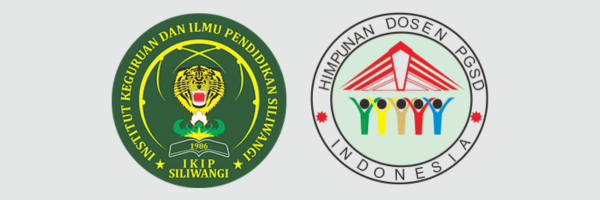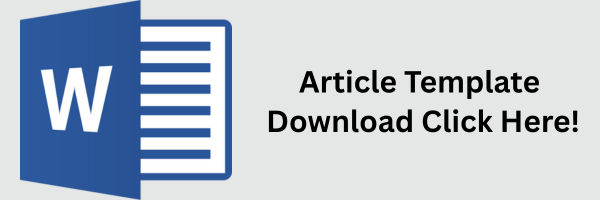Procedural Text Teaching Materials Based on VBA Microsoft Excel to Improve Students’ Writing Skills
DOI:
https://doi.org/10.22460/pej.v9i2.6252Kata Kunci:
Teaching Materials, Procedural Text, VBA Excel, Writing SkillsAbstrak
This study aims to develop procedural text teaching materials based on VBA Microsoft Excel to improve elementary school students’ writing skills. This research is motivated by the need for engaging, practical learning media that utilizes simple technology. The method used is Mixed Methods Research with an Exploratory Sequential strategy, beginning with qualitative data collection through observation and interviews, followed by quantitative data collection in the form of pretest and posttest. The research subjects were 30 students from SDN Cibeureum Mandiri 2 Cimahi, Bandung Regency. The research results showed that the average pretest score of 65 increased to 82 in the posttest, with an N-Gain of 0.53 (medium category). The interview results support this finding, indicating that students felt the VBA-based teaching material helped them understand the steps of writing procedural texts more easily and attractively. The conclusion of this study shows that procedural text teaching materials based on VBA Microsoft Excel are feasible to support Indonesian language learning in elementary schools.
Referensi
Aldya, R., Arifendi, R., Pantiwati, Y., & Chamisijatin, L. (2025). Utilization of various type of learning media to engage students’ learning interest in education department. Inteligensi : Jurnal Ilmu Pendidikan. https://doi.org/10.33366/ilg.v7i2.6483.
Alharbi, M. A. (2023). The impact of blended learning on students’ writing performance in higher education. Education and Information Technologies, 28(1), 345–362. https://doi.org/10.1007/s10639-022-11207-3
Altun, M. (2023). Developing Writing Abilities in L2: A Review. International Journal of Social Sciences & Educational Studies, 10(2), 175-178. https://doi.org/10.23918/ijsses.v10i2p175.
Azzahrah, A., Budiman, I., Haryanti, Y., & Mahpudin, M. (2022). Development of android application learning media using ispring suite 9 to increase student learning motivation. EduHumaniora | Jurnal Pendidikan Dasar Kampus Cibiru. https://doi.org/10.17509/eh.v14i2.41994.
Camacho, A., Alves, R., & Boscolo, P. (2020). Writing Motivation in School: a Systematic Review of Empirical Research in the Early Twenty-First Century. Educational Psychology Review, 33, 213-247. https://doi.org/10.1007/s10648-020-09530-4.
Cattoni, A. (2024). How to improve reading and writing skills in primary schools. Thinking Skills and Creativity, 52, 101360. https://doi.org/10.1016/j.tsc.2023.101360
Chen, C. W. Y., & Hsu, C. K. (2022). Integrating digital tools to support EFL writing: A meta-analysis. Computer Assisted Language Learning, 35(8), 1718–1742. https://doi.org/10.1080/09588221.2020.1868530
Creswell, J. W., & Plano, V. L. (2014). Designing and conducting mixed methods research (2nd ed.). Sage Publications.
Elfina, E., Waskito, W., Darni, R., Maksum, H., & Novaliendry, D. (2024). Revolutionary Flipbook-Based Digital Comic: Changing Student Engagement in Learning. JTP - Jurnal Teknologi Pendidikan. https://doi.org/10.21009/jtp.v25i3.44809.
Fontan, L., & Saint-Dizier, P. (2008). Analyzing the Explanation Structure of Procedural Texts: Dealing with Advice and Warnings. , 1, 115-127. https://doi.org/10.3115/1626481.1626491.
González-Laguna, M. V., Fidalgo, R., López, P., & Rijlaarsdam, G. (2024). A review of effective technology-based writing interventions: A componential analysis. Sustainability, 16(9), 3703. https://doi.org/10.3390/su16093703
Graham, S., & Harris, K. R. (2022). Evidence-based practices for writing instruction. Educational Psychologist, 57(3), 173–188. https://doi.org/10.1080/00461520.2022.2034857
Heinich, R., Molenda, M., Russell, J. D., & Smaldino, S. E. (2005). Instructional media and technologies for learning. Pearson Education.
Isodarus, P. B. (2017). Pembelajaran bahasa Indonesia berbasis teks. Sintesis: Jurnal Ilmiah Kebudayaan, 11(1), 45–55. https://doi.org/10.1234/sintesis.v11i1.567
Khalil, M., & Ebner, M. (2023). Learning analytics in writing instruction: Trends and perspectives. International Journal of Educational Technology in Higher Education, 20(1), 1–20. https://doi.org/10.1186/s41239-023-00392-2
Kiptiyah, B. (2019). Critical and creative thinking in the writing of the exposition text. ISLLAC : Journal of Intensive Studies on Language, Literature, Art, and Culture. 3(1), 19–25. https://doi.org/10.17977/UM006V3I12019P019.
Kızıltaş, Y., & Kultaş, E. (2025). The effect of Web 2.0 tools on primary school students’ writing motivation and their role in developing creative writing skills. Education and Information Technologies, 30, 15993–16022. https://doi.org/10.1007/s10639-025-13419-6
Kustiyanti, S.U. & Koesmijati, E. (2020). The Effectiveness of Interactive Learning Media Based on Edutainment in Writing Skills for Text Procedure. KnE Social Sciences. https://doi.org/10.18502/kss.v4i12.7631.
Limpo, T., & Alves, R. A. (2023). Promoting writing development: The role of feedback and digital tools. Journal of Writing Research, 15(2), 345–370. https://doi.org/10.17239/jowr-2023.15.02.05
Nandy, A., Kulkarni, Y., Goyal, P., & Ganguly, N. (2024). Order-Based Pre-training Strategies for Procedural Text Understanding. ArXiv, abs/2404.04676. https://doi.org/10.48550/arXiv.2404.04676.
Nursabila, A., Bahtiar, Y., Fikri, A., & Hanifah, H. (2024). Developing An Interactive PowerPoint as Supporting Media for Teaching Procedure Text. APPLICATION: Applied science in Learning Research. https://doi.org/10.32764/application.v4i1.4708.
Sudarsana, I., Nakayanti, A., Sapta, A., , H., Satria, E., Saddhono, K., Daengs, G., Putut, E., Helda, T., & Mursalin, M. (2019). Technology Application In Education And Learning Process. Journal of Physics: Conference Series, 1363. https://doi.org/10.1088/1742-6596/1363/1/012061.
Tusriyanto, T., Hikmah, N., Intes, A., Nuraini, R., & Pahmi, P. (2024). Increasing Students' Understanding by Using ICT in Elementary Schools. Journal International Inspire Education Technology, 3(1),64-74. https://doi.org/10.55849/jiiet.v3i1.626.
Wijekumar, K., Meyer, B. J. F., & Lei, P. (2022). Web-based tutoring systems for writing instruction in elementary schools: Impact and challenges. Journal of Educational Computing Research, 60(6), 1500–1520. https://doi.org/10.1177/07356331221081249
Yu, S., Hu, G., & Zheng, Y. (2022). Online peer feedback for EFL writing: A systematic review. Language Teaching Research, 26(3), 387–409. https://doi.org/10.1177/1362168820931895
Unduhan
Diterbitkan
Terbitan
Bagian
Lisensi

Artikel ini berlisensiCreative Commons Attribution-ShareAlike 4.0 International License.
The author is responsible for acquiring the permission(s) to reproduce any copyrighted figures, tables, data, or text that are being used in the submitted paper. Authors should note that text quotations of more than 250 words from a published or copyrighted work will require grant of permission from the original publisher to reprint. The written permission letter(s) must be submitted together with the manuscript.











